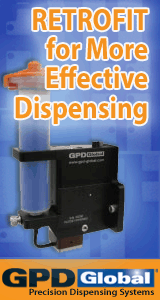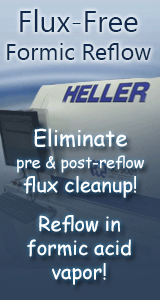Printed Circuit Board Assembly & PCB Design Forum
SMT electronics assembly manufacturing forum.
- SMTnet
- »
- Electronics Forum
- »
- underfilling of bga
underfilling of bga
Views: 18005
![]() Dear All,
Does anyone on the forum have experience with ...
- May 18, 2009
by
ozgurv
Dear All,
Does anyone on the forum have experience with ...
- May 18, 2009
by
ozgurv
![]()
![]()
![]() whats the reason for the underfill? we dont underfill any of...
- May 19, 2009
by
Bryan
whats the reason for the underfill? we dont underfill any of...
- May 19, 2009
by
Bryan
![]()
![]()
![]() Search the fine SMTnet Archives to find threads like: ...
- May 19, 2009
by
davef
Search the fine SMTnet Archives to find threads like: ...
- May 19, 2009
by
davef
![]()
![]()
![]() Good Morning,
We are underfilling some of our BGA's. This...
- May 19, 2009
by
CL
Good Morning,
We are underfilling some of our BGA's. This...
- May 19, 2009
by
CL
![]()
![]()
![]() Depending on the material chosen, it's possible to �rework� ...
- May 22, 2009
by
1smtdude
Depending on the material chosen, it's possible to �rework� ...
- May 22, 2009
by
1smtdude
![]()
![]()
![]() Henkel- Hysol seems to be the most popular material that I s...
- May 22, 2009
by
PeteC
Henkel- Hysol seems to be the most popular material that I s...
- May 22, 2009
by
PeteC
![]()
![]()
![]() 1smtdude,
I interested in your explaination of re-work an u...
- Jul 01, 2009
by
1smtdude,
I interested in your explaination of re-work an u...
- Jul 01, 2009
by
![]()
![]() > 1smtdude, I interested in your explaination of
> r...
- Jul 14, 2009
by
anndi
> 1smtdude, I interested in your explaination of
> r...
- Jul 14, 2009
by
anndi
![]()
![]()
![]() Depending on the end use of the PCB, edge or corner bonding ...
- Jul 15, 2009
by
rwyman
Depending on the end use of the PCB, edge or corner bonding ...
- Jul 15, 2009
by
rwyman
![]()
![]()
![]() There is a wide range of BGA underfills to satisfy specific ...
- Mar 19, 2010
by
karlo
There is a wide range of BGA underfills to satisfy specific ...
- Mar 19, 2010
by
karlo
![]()
![]()
![]() Rework is typically done by heating the BGA to 170-180C to f...
- Mar 19, 2010
by
karlo
Rework is typically done by heating the BGA to 170-180C to f...
- Mar 19, 2010
by
karlo
![]()
- SMTnet
- »
- Electronics Forum
- »
- underfilling of bga







